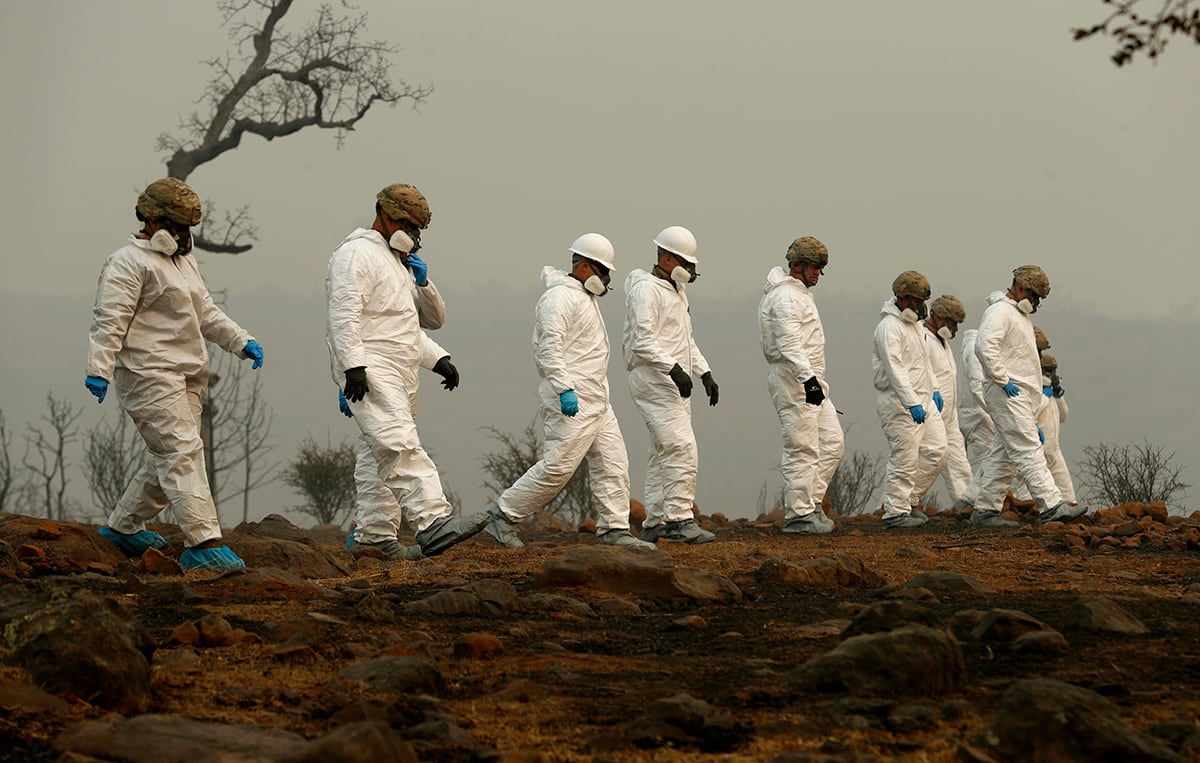Coordinating Army operations at home falls to a sometimes overlooked organization known as U.S. Army North. But for the past few years, and especially in recent months, that organization has been anything but in the background.
Personnel with ARNORTH have managed Army efforts to battle the COVID-19 global pandemic since before it arrived at our shores. They’ve also been synchronizing work across a variety of emergencies, from seasonal wildfires and sever weather response to helping care for 76,000 Afghan evacuees who fled their homeland following the country’s takeover by the Taliban last year.
Lt. Gen. John R. Evans Jr. spoke with Army Times recently, providing updates to the work that ARNORTH conducts.
RELATED

The “Operation Allies Welcome” that oversaw the movement of those Afghan evacuees to multiple military installations across the country, assisted and placed in the community recently wound down, as did some of the command’s COVID-19 activities.
But Evans’ team will get little rest. The summer wildfire season is around the corner, and that will be followed by tornado and hurricane seasons, which batter various parts of the country every year.
Since COVID-19 struck the United States in 2020, ARNORTH has coordinated 5,800 Department of Defense personnel in 128 hospitals in 102 cities across 31 states, Evans said.
Seasonal responses that have grown more severe in recent years and new missions mean a lot of creative thinking and resource management needs to be done on ARNORTH’s part, he added.
“We built the airplane in flight,” Evans said, referring to how they were tasked almost overnight with providing relief to the Afghan refugees at the end of last summer.
Two decades ago, there wasn’t a U.S. Northern Command for ARNORTH to fall under, Evans said. That command was activated in 2002.
Subsequently, ARNORTH has been involved in its regular homeland duties but also with helping mobilize soldiers for overseas deployments, which it did throughout the wars in Iraq and Afghanistan.
In recent years, the command’s role has expanded to include task forces with all services and components represented to respond to potential chemical, biological and nuclear attacks inside the United States. Those include Task Force 76 and Task Force 46.

They work in parallel with the Federal Emergency Management Agency. ARNORTH provides emergency preparedness liaison officers who pair with FEMA at the regional level, working with both state and federal entities for such responses.
Another mission, or at least a consideration, that ARNORTH is now sketching out plans for includes ensuring troops and gear get from their stateside home to an airport or seaport safely.
While safety in the homeland hasn’t been top on the priority list, growing cybersecurity threats and potential vulnerabilities when taking troops and equipment where they need to go has Evans talking with base commanders, local, state and federal agencies.
That’s all to ensure that nothing threatens or impedes units from deploying out of the United States.
Evans said that with advances in technology and changing tactics by adversaries, commanders “can’t consider ourselves safe in the homeland.”
But leaders have to ask tough questions, he said. A former installation commander himself, Evans said he easily knew who controlled troops and equipment on site. But “once those trains pulled past my gate, now whose operation is it?”
And there are civil authorities, which are all involved in seemingly simple things like moving tanks and trucks and soldiers from their fort to the port.
“We’re painting a picture for NORTHCOM, assuring that we have force projection,” Evans said. “We’re looking at that in-depth right now, looking at that last tactical mile.”
Todd South has written about crime, courts, government and the military for multiple publications since 2004 and was named a 2014 Pulitzer finalist for a co-written project on witness intimidation. Todd is a Marine veteran of the Iraq War.








